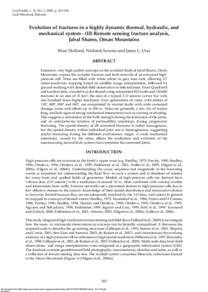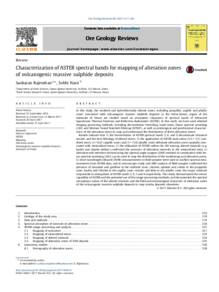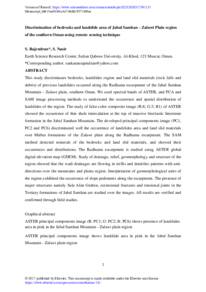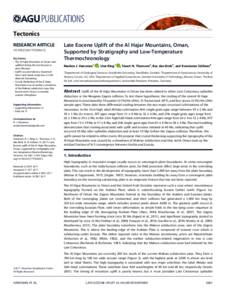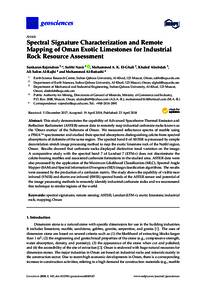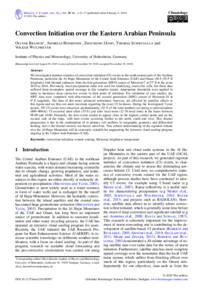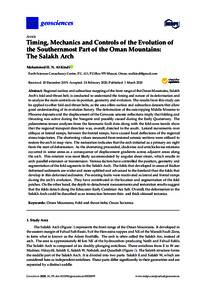Document
Evolution of fractures in a highly dynamic thermal, hydraulic, and mechanical system- (II) remote sensing fracture analysis, Jabal Shams, Oman mountains.
Identifier
DOI: 10.2113/geoarabia1403163
Contributors
Saxena, Nishank., Author
Urai, Janos L., Author
Publisher
Gulf Petrolink.
Gregorian
2009-12
Language
English
English abstract
Extensive, very high quality outcrops on the southern flank of Jabal Shams, Oman Mountains, expose the complex fracture and fault network of an exhumed high- pressure cell. Veins are filled with white calcite in grey host rock, allowing 0.7 meter-resolution mapping based on satellite image interpretation, followed by ground-truthing with detailed field observation in selected areas. From Quickbird and Landsat data, a model was developed using interpreted 562 faults and 145,000 fractures in an area of 31 km2; the area of a typical 3-D seismic survey but with one hundred times higher resolution. Four generations of veins, with strikes of 130°, 000°, 090° and 045°, are overprinted by normal faults with wide cemented damage zones and offsets up to 500 m. Veins are generally a few 10s of meters long, and lack signs of strong mechanical interactions such as curving or abutting. This suggests a restoration of the bulk strength during the formation of the joints, and an anticlockwise rotation of permeability anisotropy during progressive fracturing. The spatial density of all cemented fractures is rather homogenous, but the spatial density within individual joint sets is heterogeneous, suggesting patchy fracturing during the different evolutionary stages. A weak mechanical anisotropy, caused by the veins, affects the nucleation and evolution of the anastomosing normal fault system that overprints the cemented joints.
Member of
ISSN
1025-6059
Resource URL
Category
Journal articles

